Abstract
SM-7338, a new carbapenem, inhibited most members of the family Enterobacteriaceae at MICs of 0.015 to 0.25 microgram/ml, including Klebsiella oxytoca, Citrobacter freundii, Enterobacter cloacae, and Proteus vulgaris isolates resistant to cefotaxime, ceftazidime, piperacillin, and gentamicin. It was two- to eightfold more active than imipenem, but it inhibited Pseudomonas aeruginosa at 1 to 8 micrograms/ml, which was comparable to the activity of imipenem. Haemophilus, Neisseria, and Branhamella species were inhibited by less than or equal to 0.25 microgram/ml, which was superior to the activity of imipenem. SM-7338 inhibited Staphylococcus aureus and coagulase-negative staphylococci at 0.25 microgram/ml, but for methicillin-resistant isolates MICs were 4 to 16 micrograms/ml. Group A, B, and C streptococci and Streptococcus pneumoniae were inhibited by less than or equal to 0.03 microgram/ml. Bacteroides species, including clindamycin-resistant isolates, were inhibited by 0.25 microgram/ml. There was no major inoculum size effect, and the MBCs were within a dilution of the MICs. SM-7338 was more active than imipenem at an acid pH under anaerobic conditions. Plasmid beta-lactamases of TEM-1, TEM-2, TEM-3, TEM-5, SHV-1, SHV-2, PSE-1, PSE-2, PSE-3, OXA-2, OXA-3, OXA-4, OXA-5, and OXA-7; Staphylococcus aureus enzymes; and the chromosomal beta-lactamases P-99 and K-1; Morganella species; and Proteus vulgaris did not hydrolyze SM-7338. The repeated transfer of organisms increased the MICs of SM-7338, as it did the MICs of imipenem.
Full text
PDF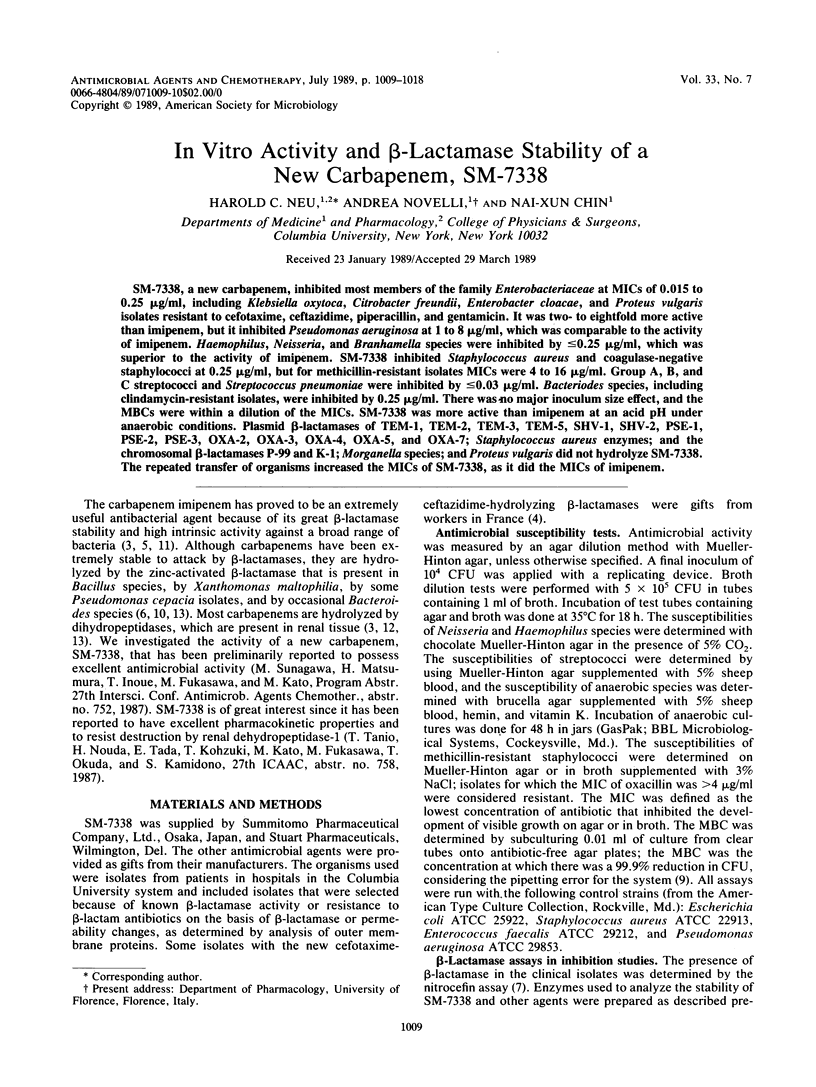
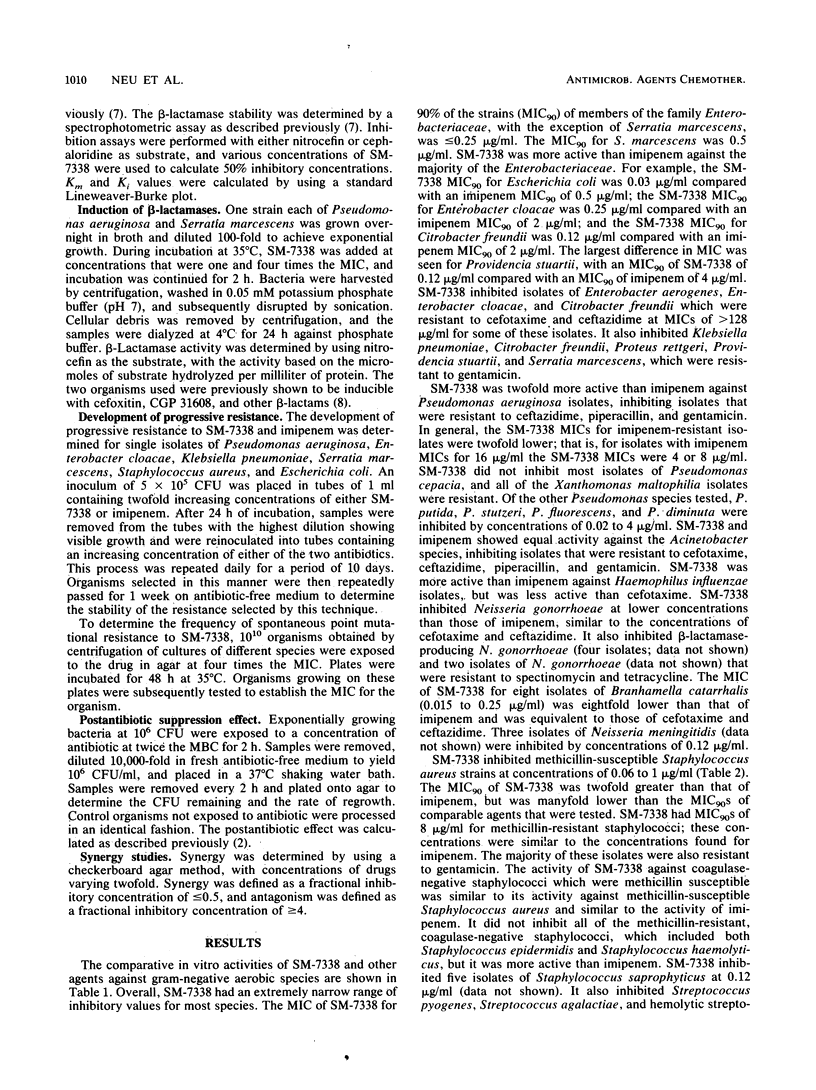
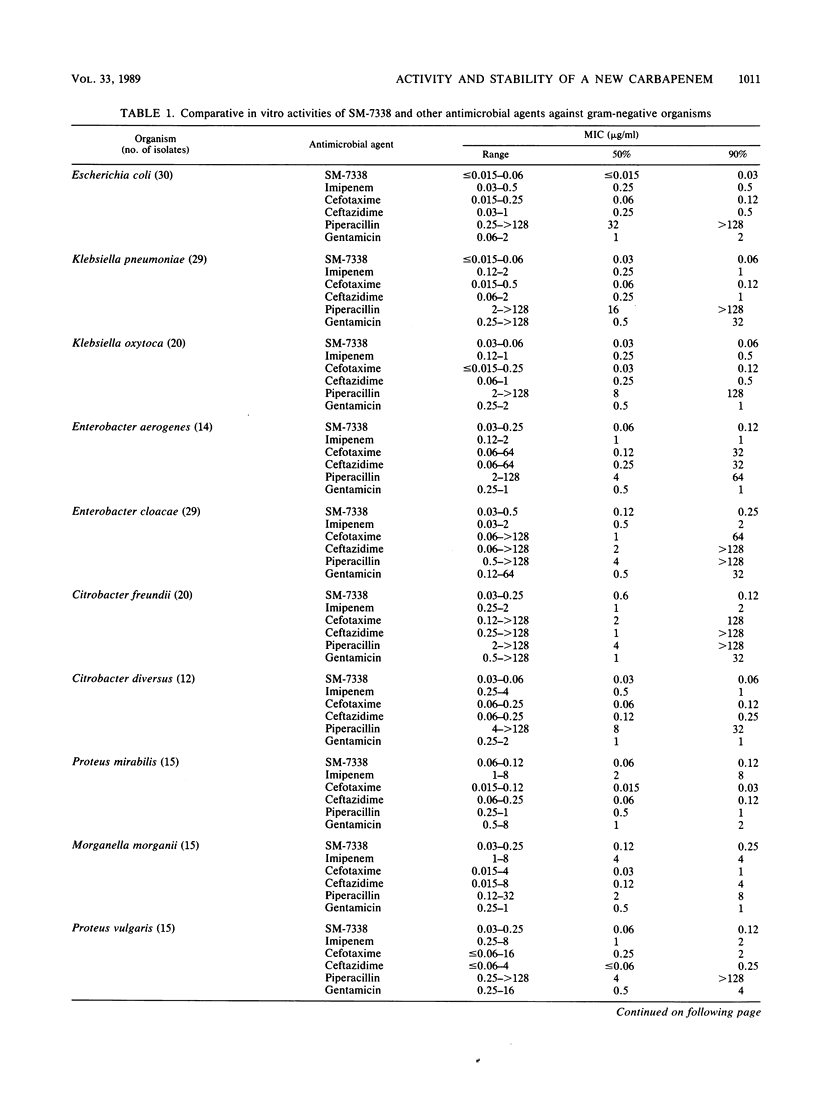
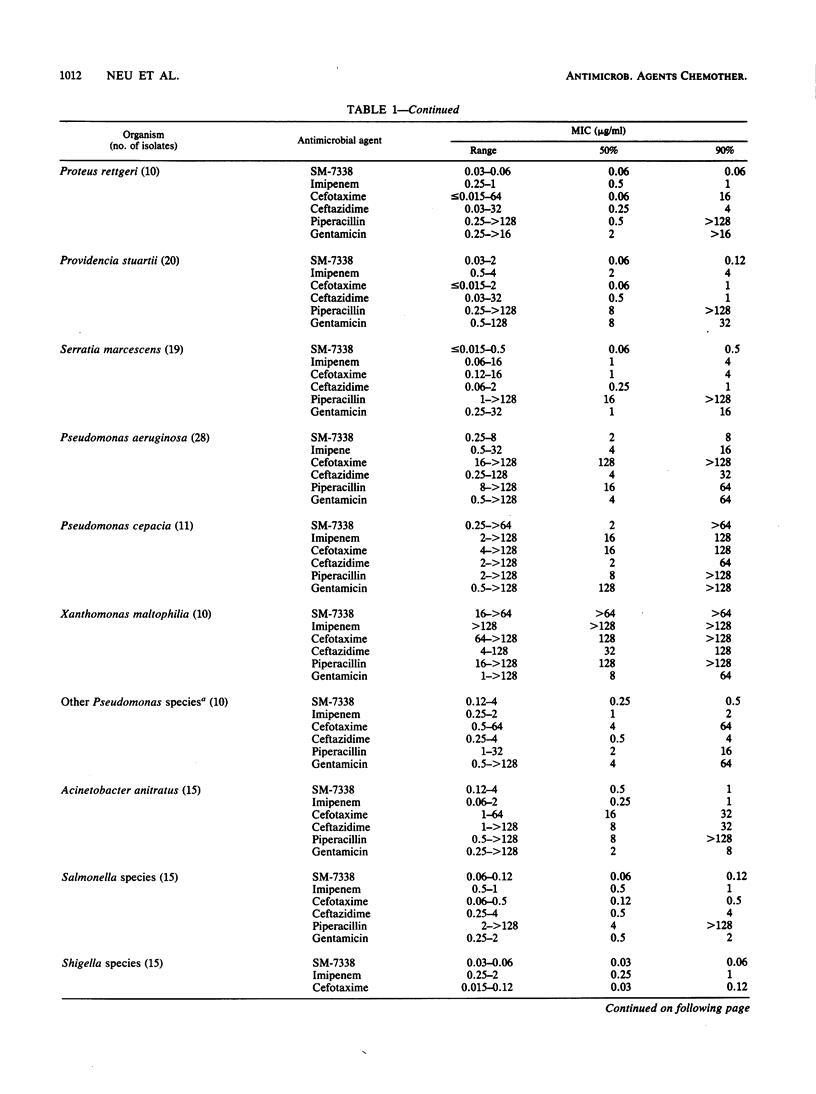
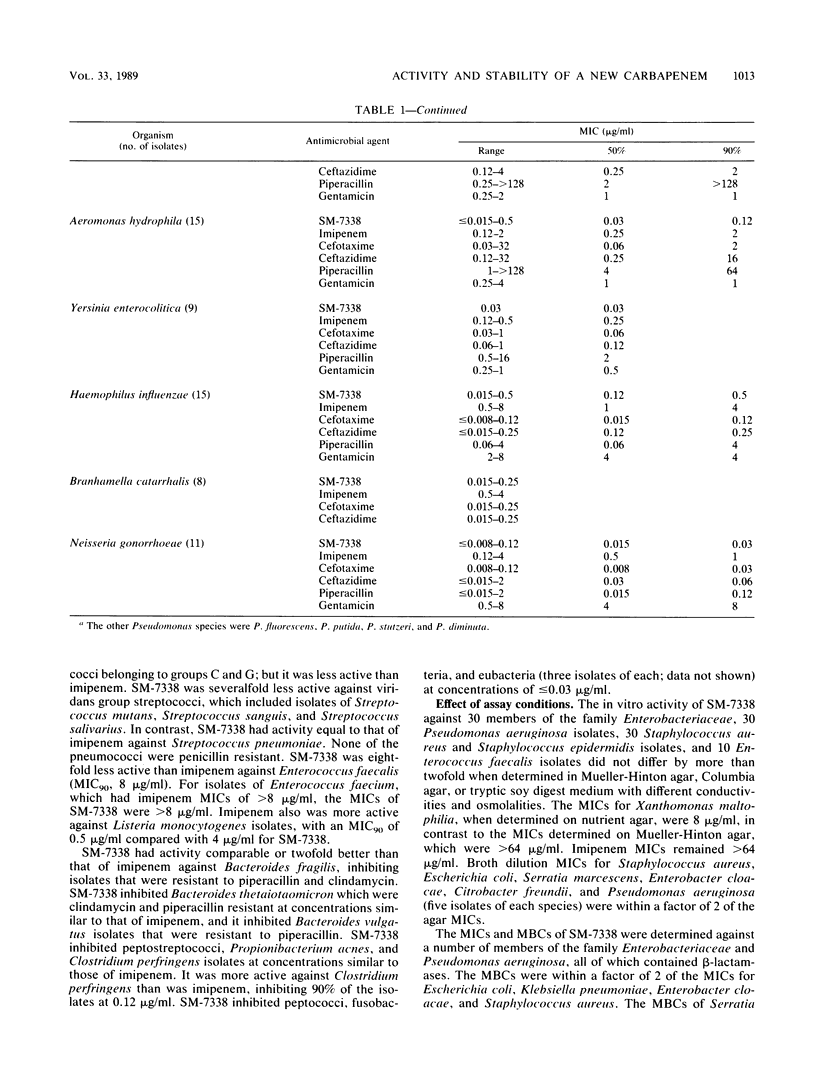
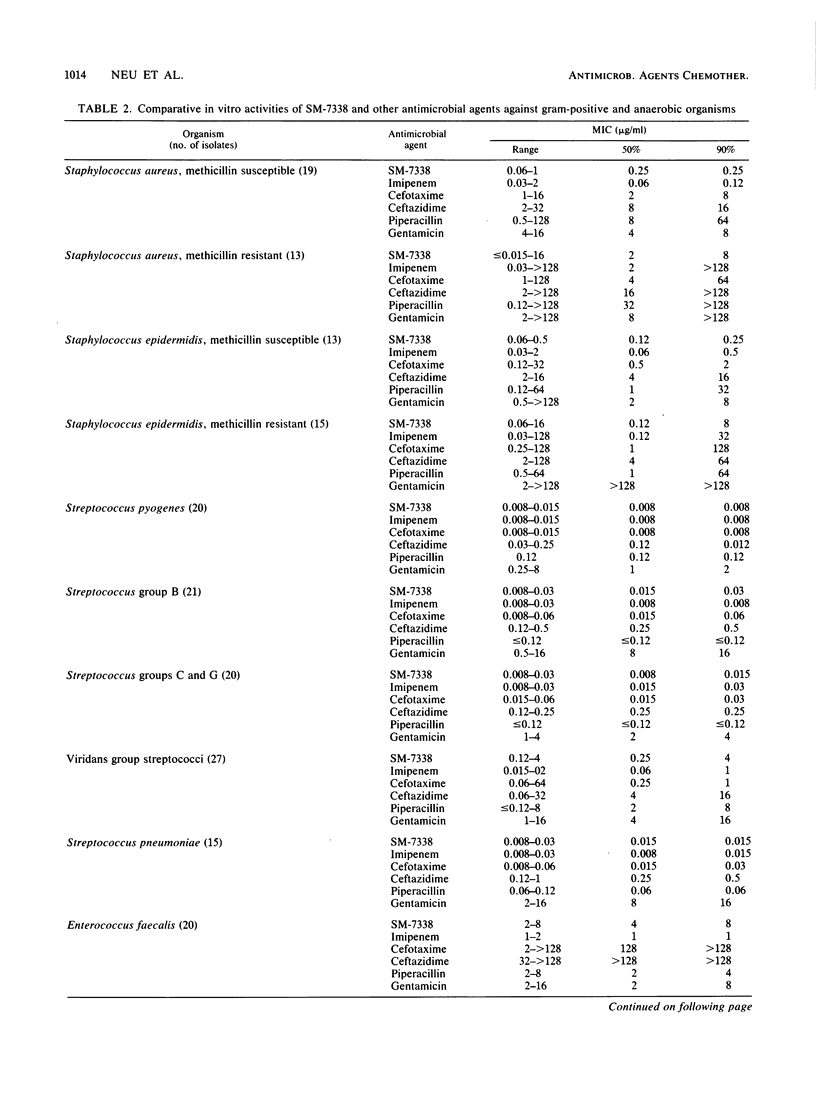
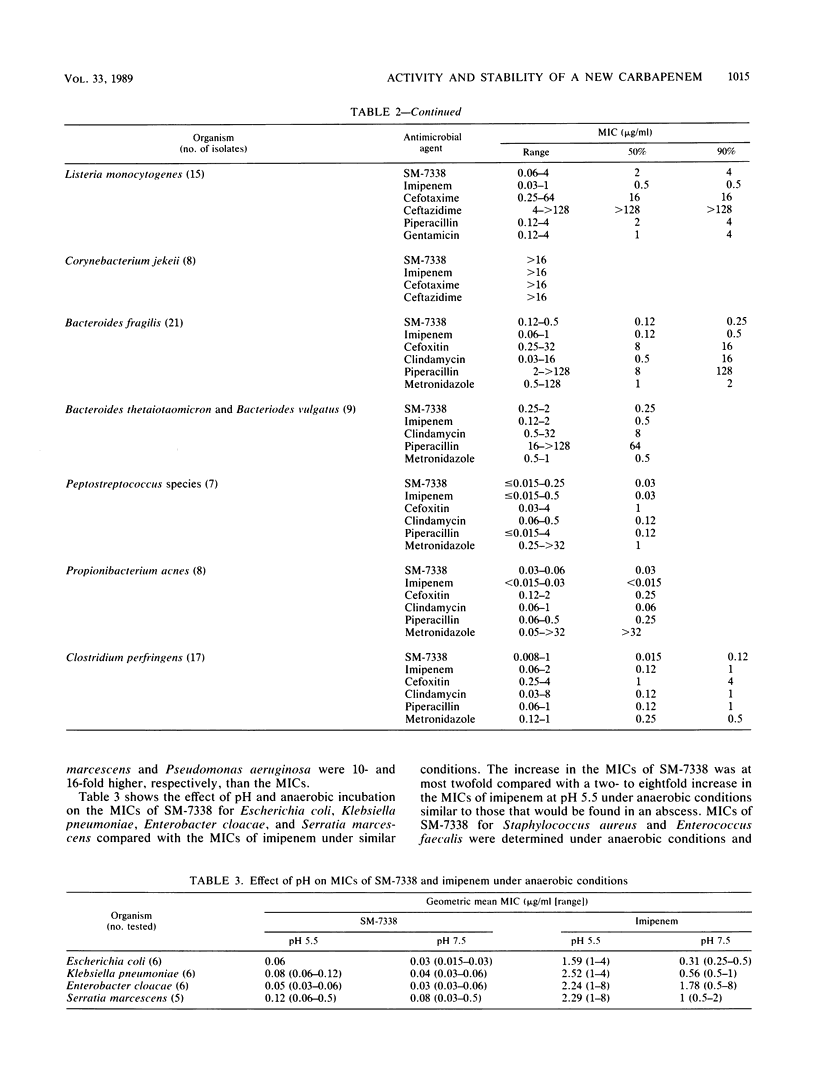
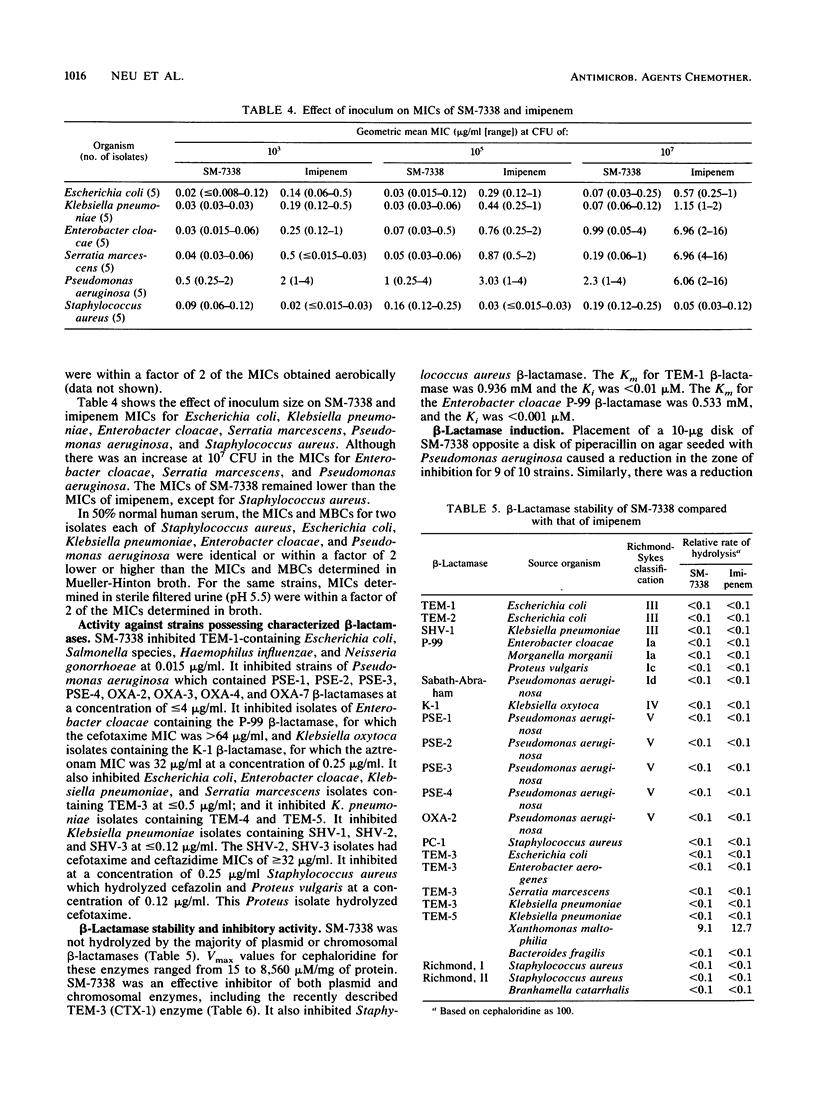
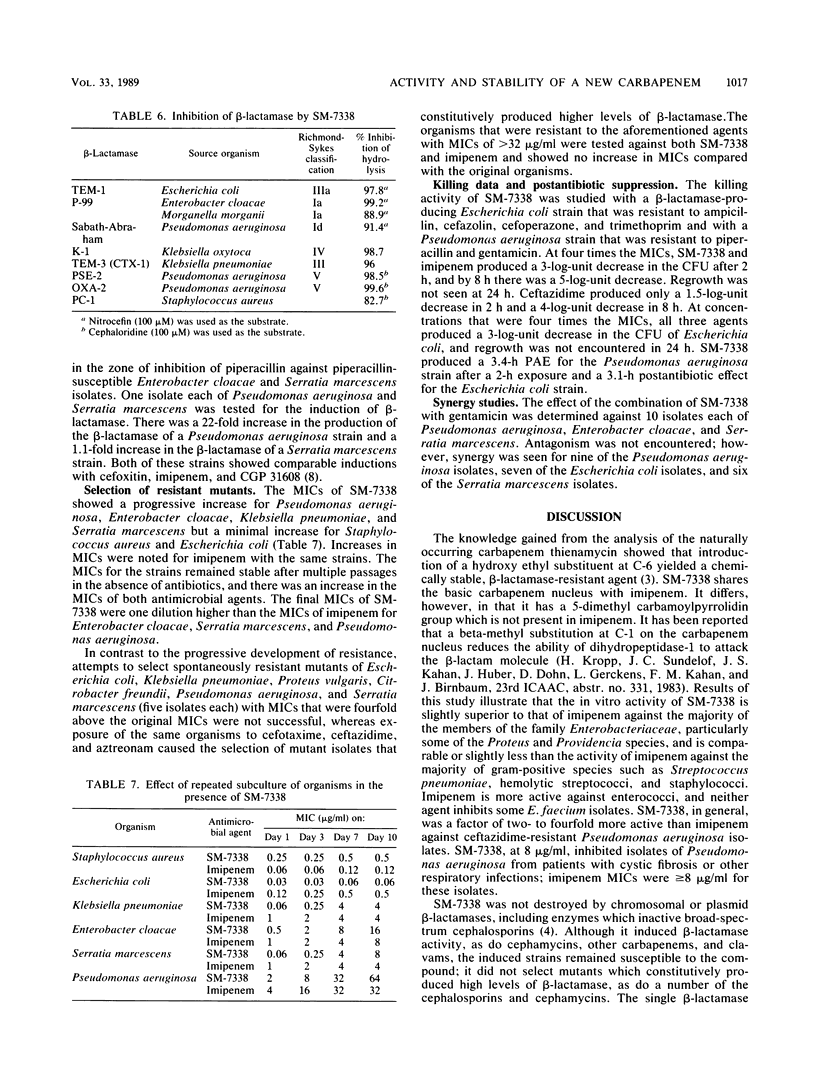
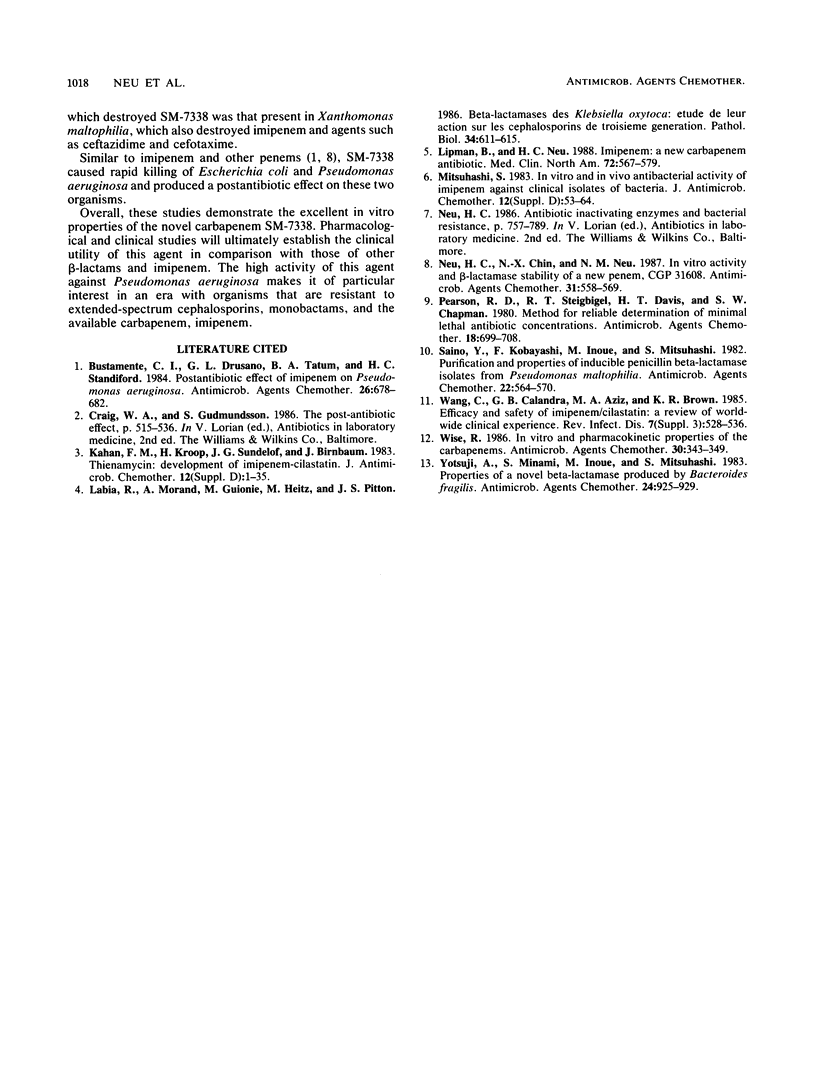
Selected References
These references are in PubMed. This may not be the complete list of references from this article.
- Bustamante C. I., Drusano G. L., Tatem B. A., Standiford H. C. Postantibiotic effect of imipenem on Pseudomonas aeruginosa. Antimicrob Agents Chemother. 1984 Nov;26(5):678–682. doi: 10.1128/aac.26.5.678. [DOI] [PMC free article] [PubMed] [Google Scholar]
- Kahan F. M., Kropp H., Sundelof J. G., Birnbaum J. Thienamycin: development of imipenen-cilastatin. J Antimicrob Chemother. 1983 Dec;12 (Suppl 500):1–35. doi: 10.1093/jac/12.suppl_d.1. [DOI] [PubMed] [Google Scholar]
- Labia R., Morand A., Guionie M., Heitz M., Pitton J. S. Bêtalactamases de Klebsiella oxytoca: étude de leur action sur les céphalosporines de troisième génération. Pathol Biol (Paris) 1986 Jun;34(5 Pt 2):611–615. [PubMed] [Google Scholar]
- Lipman B., Neu H. C. Imipenem: a new carbapenem antibiotic. Med Clin North Am. 1988 May;72(3):567–579. doi: 10.1016/s0025-7125(16)30759-3. [DOI] [PubMed] [Google Scholar]
- Mitsuhashi S. In-vitro and in-vivo antibacterial activity of imipenem against clinical isolates of bacteria. J Antimicrob Chemother. 1983 Dec;12 (Suppl 500):53–64. doi: 10.1093/jac/12.suppl_d.53. [DOI] [PubMed] [Google Scholar]
- Neu H. C., Chin N. X., Neu N. M. In vitro activity and beta-lactamase stability of a new penem, CGP 31608. Antimicrob Agents Chemother. 1987 Apr;31(4):558–569. doi: 10.1128/aac.31.4.558. [DOI] [PMC free article] [PubMed] [Google Scholar]
- Pearson R. D., Steigbigel R. T., Davis H. T., Chapman S. W. Method of reliable determination of minimal lethal antibiotic concentrations. Antimicrob Agents Chemother. 1980 Nov;18(5):699–708. doi: 10.1128/aac.18.5.699. [DOI] [PMC free article] [PubMed] [Google Scholar]
- Saino Y., Kobayashi F., Inoue M., Mitsuhashi S. Purification and properties of inducible penicillin beta-lactamase isolated from Pseudomonas maltophilia. Antimicrob Agents Chemother. 1982 Oct;22(4):564–570. doi: 10.1128/aac.22.4.564. [DOI] [PMC free article] [PubMed] [Google Scholar]
- Wise R. In vitro and pharmacokinetic properties of the carbapenems. Antimicrob Agents Chemother. 1986 Sep;30(3):343–349. doi: 10.1128/aac.30.3.343. [DOI] [PMC free article] [PubMed] [Google Scholar]
- Yotsuji A., Minami S., Inoue M., Mitsuhashi S. Properties of novel beta-lactamase produced by Bacteroides fragilis. Antimicrob Agents Chemother. 1983 Dec;24(6):925–929. doi: 10.1128/aac.24.6.925. [DOI] [PMC free article] [PubMed] [Google Scholar]


